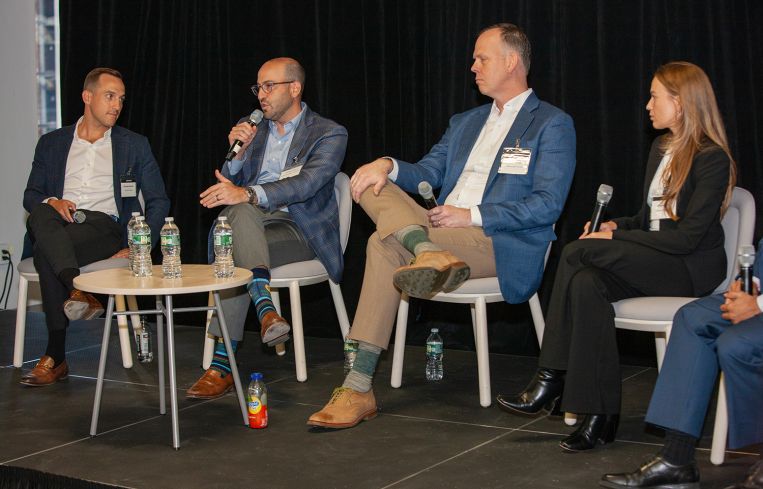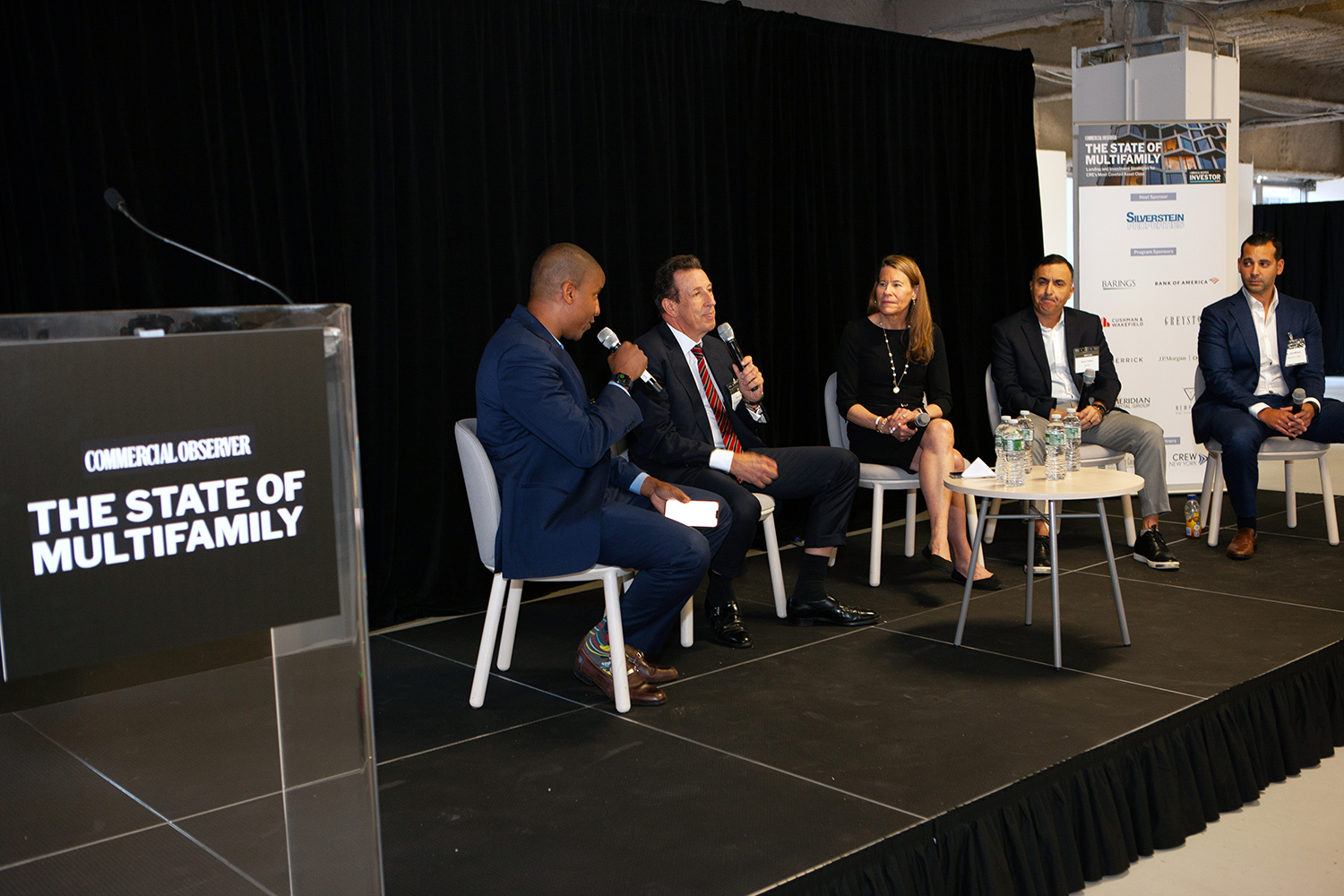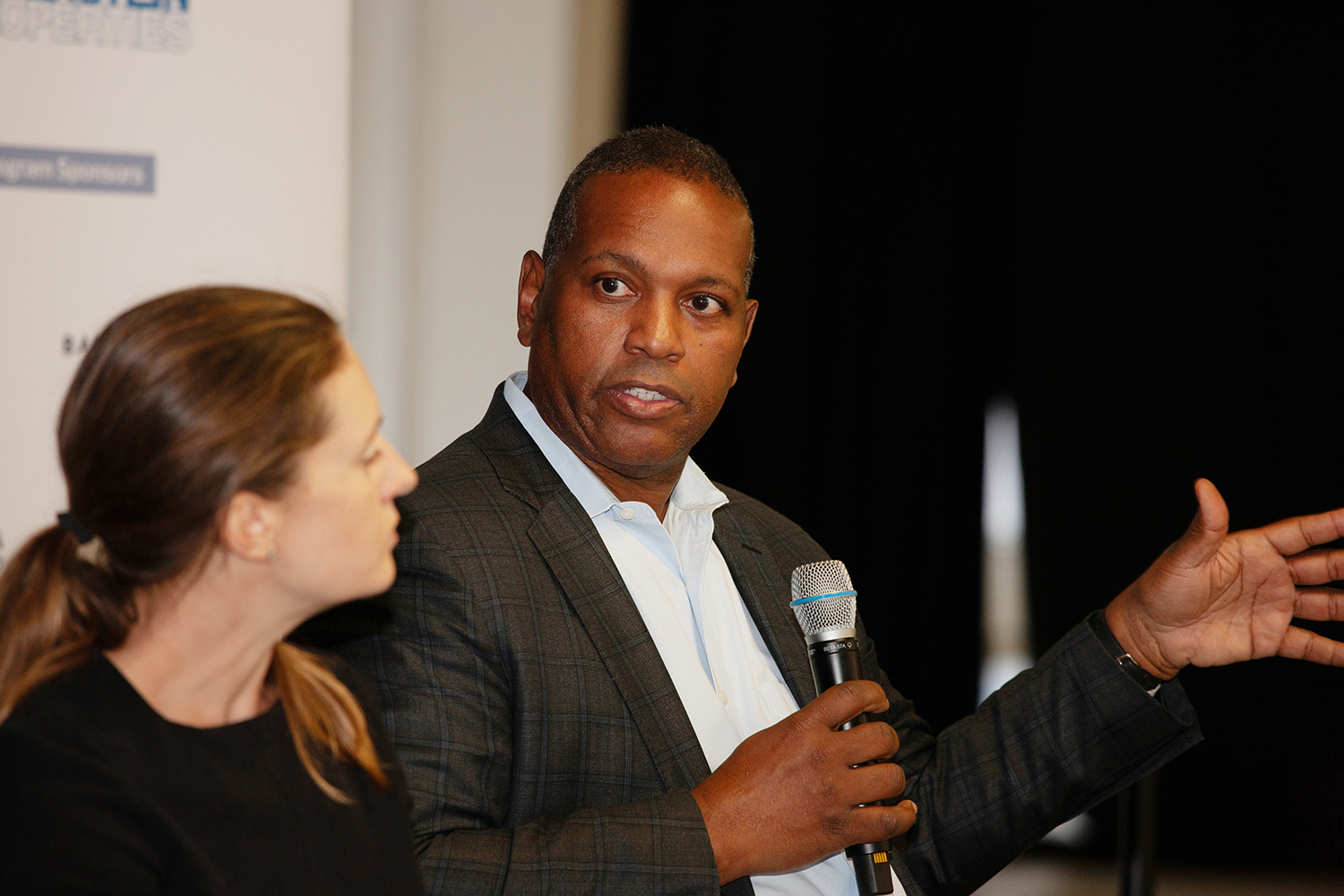Multifamily Market a Safe Bet Still Despite Mounting Challenges: Forum
By Rebecca Baird-Remba September 27, 2023 2:33 pm
reprints
How is the multifamily investment market doing?
Well, it depends who you ask, and where in the country they are buying (or developing). If it’s the Sun Belt, they might be seeing oversupply and depressed rents. If it’s the Northeast or the Midwest, they are probably raising rents more quickly than in recent years, while battling high operating costs. And everyone is worried about skyrocketing interest rates.
That’s according to attendees at Commercial Observer’s multifamily forum held Sept. 21 on the 16th floor of 1177 Avenue of the Americas.
Following a keynote from owner and developer Harbor Group International’s Yisroel Berg and law firm Herrick Feinstein’s Jonathan Adelsberg, the initial panel of the daylong forum dived into how the cost of debt was affecting the ability to purchase new apartment buildings.
“We’re moving ahead with buying a portfolio in Florida, but we’re being cautious,” said David Hochfelder, the chief investment officer at Naftali Group. “There’s more price discovery in multifamily. It’s just much better relative value to finance something at 65 percent LTV [loan to value ratio on a mortgage] — which, on the equity side with today’s financing and equity costs, I don’t think those deals underwrite that way.”
He added that it was “better relative value financing other people than taking the plunge yourself” on purchasing property these days.
It’s become so challenging to buy that many firms are getting into the alternative lending business. “Now we have people popping up that were in the equity space before,” said David Greenburg, a managing director at Affinius Capital. “The lending space is a great space to be.”
Michael Boxer, the managing director of private real estate debt at CenterSquare Investment Management, noted that “In the debt space, we have room to be wrong. With equity, the stars need to be aligned perfectly.”
And investors who need to refinance will be looking at choppy waters for the next two years.
“I think your best lender is your existing lender, and you may just be playing them down,” said P.J. Yeatman, a managing partner at investment manager Corten Real Estate Partners.
Next up was a fireside chat with Cushman & Wakefield’s Lauren Kaufman and lender Greystone’s Blake Okland, where distressed debt and buyers struggling with their financing options were once again the topic of discussion.

“A lot of buyers are motivated to kick the can down the road as far as they can,” said Kaufman, on the topic of buying in the current interest rate environment. “There are going to be lenders who can work with their borrowers. There’s plenty of gap capital.”
And, as many investors in New York’s five boroughs know, rent-regulated properties have taken a hit to their value since rent laws changed in 2019. Rising interest rates haven’t helped matters.
“There are not many people who feel comfortable breaking into the market right now,” Kaufman said of New York City. “I think anything that’s subject to rent regulation here in New York is considered distressed.”
Okland pointed out that nonresidential investors are feeling even more of a pinch when it comes to financing and revenue because of rising interest rates. “I think every food group in real estate is trying to figure out how to deal with low assumption rates,” he noted.
Some owners view affordable housing as a more stable investment amid spiking cap rates. However, not everyone on the afternoon affordable housing panel agreed.
“When you have rent restrictions and the capital markets push up interest rates, it’s a recipe for disaster,” said Pembrook Capital Management CEO Stuart Boesky. “Unless the capital markets reverse course fairly quickly, affordable housing is going to suffer some real consequences.”
Daron Tubian, who oversees affordable housing investments for investment manager Barings, said that middle-income affordable properties — often called workforce housing — was “a growing part of our overall strategy. It hovers between 80 and 120 percent of the area median income, and, in New York City, it can be as high as 165 percent. We [are creating] a fund to provide competitive financing for projects with up to 50 percent affordable [workforce] housing.”
Barings isn’t the only firm looking to build more workforce housing business. Michael Milazzo, an executive at tax credit syndicator and agency lender Merchants Capital, noted that his firm “recently started a product that lends toward that workforce housing, above that definition of affordable at 60 percent AMI. We’re seeing Fannie and Freddie being more flexible, too.”
Bank of America has started financing more middle-income affordable projects too.
“One of the things that we embarked on earlier this year is a middle-income housing fund,” said Maria Barry, the national executive for community development banking at Bank of America. “And our hope is to provide some capital that’s lower than a private equity cost, higher than a [federal Community Development Financial Institutions fund] cost, but something that will be in there to help get that deal done and help preserve units. And so we’re partnering with Enterprise Community Partners on that idea. And our hope is that, through that fund, we can help preserve an additional 3,000 housing units.”
Aundre Oldacre, a managing partner at suburban residential developer AoRa Development, said his firm had been trying to take a more sustainable approach to building new residential, especially for affordable projects.
“We’re looking at building cheaper, faster,” he explained. “We’re looking at off-site construction techniques, all sorts of building materials, mass timber. We’re looking at 3D printing for foundations, reducing formwork.”
Another afternoon panel also focused on affordable housing and how it can help historically marginalized communities. The speakers included Rod Mullice of developer Windsor Stevens, Sara Myerson of developer MSquared, Maria Castro Vainer of JPMorgan Chase and Amanda Nunnink of investment firm Kayne Anderson Real Estate.
The second-to-last discussion of the day revolved around who benefits from the current distressed investment sales market.
Manish Shah of Palladius Capital Management said his firm had been willing to do riskier deals because they saw opportunities for longer-term upside. “We’re actually doing a lot of deals with negative leverage, and we’re funding deals where there’s negative leverage,” he explained.
Shah argued that sometimes there were benefits to bucking the trends and the real estate headlines.
“We bought New York City hotels about a year and a half ago,” he said. “And the headlines were New York is dead, everyone’s a zombie, COVID’s still around. So sometimes you have to take some risks.” Now, Shah pointed out, hotel room rates are hitting or exceeding pre-pandemic benchmarks.
Nicholas Baccile of hedge fund Canyon Partners pointed out that, even in New York City, his firm had made some solid multifamily bets.
“We have a few deals in Gowanus and we think we can generate a 6 percent yield,” said Baccile. “Having a 6 or 7 percent yield on a Class A multifamily asset in New York feels pretty good.”
Operating costs, however, are only getting more expensive. Rising insurance premiums are hitting multifamily landlords especially hard.

Amanda Gray, a director of capital markets at owner and investor Invesco, noted that Newmark’s latest multifamily report found that “operating costs were up 8 percent year-over-year, and a big piece of that is that insurance costs were up 30 percent year-over-year.”
Insurance quotes for many apartment buildings were now coming in at double what they had underwritten properties for, said Mark Stewart, the chief investment officer at The Bainbridge Companies, a developer.
But, even with rising costs, the return on investment for multifamily properties in many parts of the country is still pretty good, because the average American can no longer afford to buy a house or a condo.
“The alternative of home purchasing is now out of reach for most Americans, which makes it more affordable to rent versus own,” said Ari Abramson of Continental Realty.
In the last panel of the day, investors and lenders chatted about the elephant in the room: mortgages on buildings coming due as interest rates rise, and how lenders and borrowers are responding. Speakers included Martin Fayer of NewPoint Real Estate Capital, Ronnie Levine of Meridian Capital Group, Justin Levitt of investor PGIM Real Estate, Jerry Murphy of developer and owner Davis Companies, and David Ruttenberg of Ruttenberg Gordon Investments.
“My advice is to refinance all your properties all the time,” joked Levine. “We know of deals where banks are quietly selling loans. And, when that wall of liquidity thinks it’s time, then that wave of institutional capital is going to bid up prices.”


